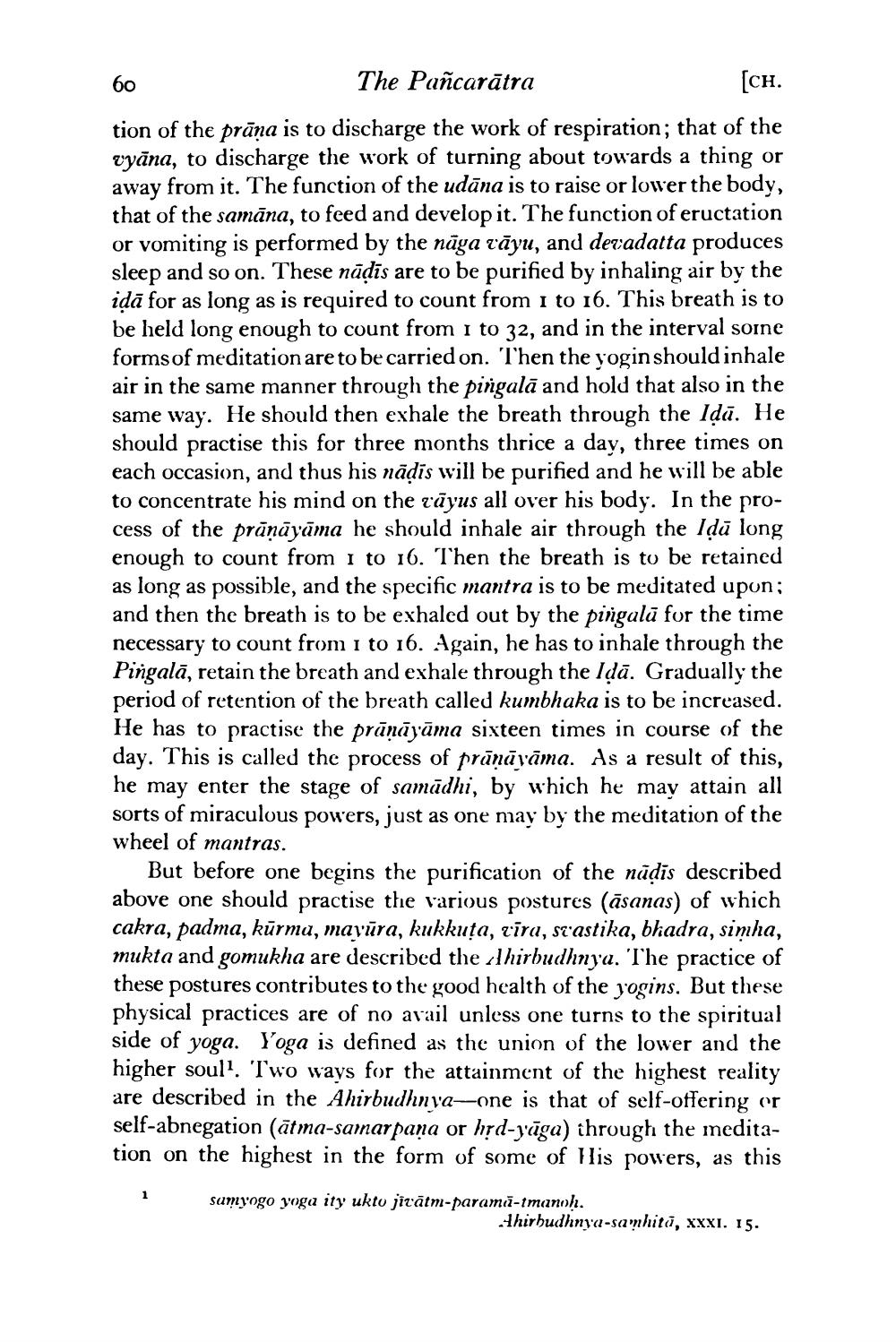________________
60
The Pañcarātra
(CH.
tion of the prāna is to discharge the work of respiration; that of the vyāna, to discharge the work of turning about towards a thing or away from it. The function of the udāna is to raise or lower the body, that of the samāna, to feed and develop it. The function of eructation or vomiting is performed by the nāga vāyu, and devadatta produces sleep and so on. These nādīs are to be purified by inhaling air by the idā for as long as is required to count from 1 to 16. This breath is to be held long enough to count from 1 to 32, and in the interval soine forms of meditation are to be carried on. Then the yogin should inhale air in the same manner through the pingalā and hold that also in the same way. He should then exhale the breath through the ldā. He should practise this for three months thrice a day, three times on each occasion, and thus his nādis will be purified and he will be able to concentrate his mind on the rāyus all over his body. In the process of the prāņāyāma he should inhale air through the Idū long enough to count from 1 to 16. Then the breath is to be retained as long as possible, and the specific mantra is to be meditated upon; and then the breath is to be exhaled out by the pingalā for the time necessary to count from 1 to 16. Again, he has to inhale through the Pingalā, retain the breath and exhale through the ldā. Gradually the period of retention of the breath called kumbhaka is to be increased. He has to practise the prānāyāma sixteen times in course of the day. This is called the process of prāṇāvāma. As a result of this, he may enter the stage of samādhi, by which he may attain all sorts of miraculous powers, just as one may by the meditation of the wheel of mantras.
But before one begins the purification of the nūdis described above one should practise the various postures (āsanas) of which cakra, padma, kūrma, mavūra, kukkuța, tīra, stastika, bhadra, simha, mukta and gomukha are described the chirbudhnya. The practice of these postures contributes to the good health of the yogins. But these physical practices are of no avail unless one turns to the spiritual side of yoga. Yoga is defined as the union of the lower and the higher soull. Two ways for the attainment of the highest reality are described in the Ahirbudhnya-one is that of self-offering or self-abnegation (ātma-samarpana or hird-yuga) ihrough the meditation on the highest in the form of some of His powers, as this
sumyogo yoga ity ukto jirātm-paramu-tmanoh.
Thirbudhnya-samhiti, XXXI. 15.




